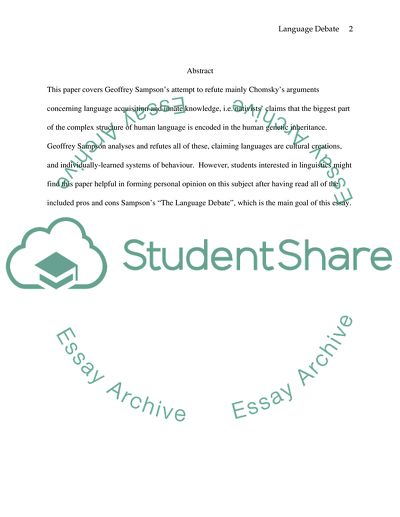Cite this document
(Evaluation of Geoffrey Sampsons The Language Debate Research Paper, n.d.)
Evaluation of Geoffrey Sampsons The Language Debate Research Paper. Retrieved from https://studentshare.org/education/1723939-linguistics-assignment-read-and-evaluate-geoffrey-sampsons-the-language-debatepublished-july-2005-his-argument-is-an-explixit-attempt-to-refute-premise
Evaluation of Geoffrey Sampsons The Language Debate Research Paper. Retrieved from https://studentshare.org/education/1723939-linguistics-assignment-read-and-evaluate-geoffrey-sampsons-the-language-debatepublished-july-2005-his-argument-is-an-explixit-attempt-to-refute-premise
(Evaluation of Geoffrey Sampsons The Language Debate Research Paper)
Evaluation of Geoffrey Sampsons The Language Debate Research Paper. https://studentshare.org/education/1723939-linguistics-assignment-read-and-evaluate-geoffrey-sampsons-the-language-debatepublished-july-2005-his-argument-is-an-explixit-attempt-to-refute-premise.
Evaluation of Geoffrey Sampsons The Language Debate Research Paper. https://studentshare.org/education/1723939-linguistics-assignment-read-and-evaluate-geoffrey-sampsons-the-language-debatepublished-july-2005-his-argument-is-an-explixit-attempt-to-refute-premise.
“Evaluation of Geoffrey Sampsons The Language Debate Research Paper”, n.d. https://studentshare.org/education/1723939-linguistics-assignment-read-and-evaluate-geoffrey-sampsons-the-language-debatepublished-july-2005-his-argument-is-an-explixit-attempt-to-refute-premise.


